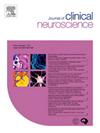Genetic associations of sex hormones with cerebral aneurysm formation and subarachnoid hemorrhage: A two-sample Mendelian randomization analysis
IF 1.9
4区 医学
Q3 CLINICAL NEUROLOGY
引用次数: 0
Abstract
Background and aim
Women are more likely than men to develop aneurysmal subarachnoid hemorrhage, and this difference is more pronounced in women after menopause, suggesting a possible correlation between sex hormone levels and cerebral aneurysm formation and rupture.
Methods and results
We selected genetic variants closely related to estrogen (estradiol), bioavailable testosterone (Bio T), and sex hormone-binding globulin (SHBG) as instrumental variables from the pooled data of the IEU Open GWAS project and cerebral aneurysm (CA) and subarachnoid hemorrhage (SAH) data from two independent datasets from the same study. Two-sample Mendelian randomization was subsequently performed to determine whether the relevant sex hormones and SHBG are causally associated with the formation and rupture of CA. We identified 14 causal associations of related sex hormones and their binding proteins with cerebral aneurysm formation and rupture. Inverse-variance weighting revealed that genetically predicted increased BioT levels reduced the risk of SAH development and genetically predicted increased levels of SHBG in females influenced reduced the risk of cerebral aneurysm formation. After excluding sex differences, weighted mode revealed opposite results, but there was no difference in the IVW, MR-Egger regression, weighted median, or simple mode analyses. No significant effects of the concentrations of other relevant sex hormones or SHBG on the risk of cerebral aneurysm formation or rupture were found.
Conclusions
Our study may explain the mechanisms underlying the increased incidence of cerebral aneurysms in menopausal women and provide new directions for intervention in cerebral aneurysm formation and rupture, but further studies are needed.
性激素与脑动脉瘤形成和蛛网膜下腔出血的遗传关联:两样本孟德尔随机分析
背景和目的女性比男性更容易发生动脉瘤性蛛网膜下腔出血,这种差异在绝经后的女性中更为明显,这表明性激素水平与脑动脉瘤形成和破裂之间可能存在相关性。方法和结果我们从IEU开放GWAS项目的汇总数据和来自同一研究的两个独立数据集的脑动脉瘤(CA)和蛛网膜下腔出血(SAH)数据中选择与雌激素(雌二醇)、生物可利用睾酮(Bio T)和性激素结合球蛋白(SHBG)密切相关的遗传变异作为工具变量。随后进行了两样本孟德尔随机化,以确定相关性激素和SHBG是否与CA的形成和破裂有因果关系。我们确定了14种相关性激素及其结合蛋白与脑动脉瘤的形成和破裂有因果关系。反方差加权显示,基因预测的BioT水平升高降低了SAH发生的风险,基因预测的SHBG水平升高降低了女性脑动脉瘤形成的风险。在排除性别差异后,加权模型显示相反的结果,但在IVW、MR-Egger回归、加权中位数或简单模型分析中没有差异。其他相关性激素或SHBG浓度对脑动脉瘤形成或破裂风险无显著影响。结论本研究可能解释了绝经期妇女脑动脉瘤发生率增高的机制,为干预脑动脉瘤形成和破裂提供了新的方向,但仍需进一步研究。
本文章由计算机程序翻译,如有差异,请以英文原文为准。
求助全文
约1分钟内获得全文
求助全文
来源期刊

Journal of Clinical Neuroscience
医学-临床神经学
CiteScore
4.50
自引率
0.00%
发文量
402
审稿时长
40 days
期刊介绍:
This International journal, Journal of Clinical Neuroscience, publishes articles on clinical neurosurgery and neurology and the related neurosciences such as neuro-pathology, neuro-radiology, neuro-ophthalmology and neuro-physiology.
The journal has a broad International perspective, and emphasises the advances occurring in Asia, the Pacific Rim region, Europe and North America. The Journal acts as a focus for publication of major clinical and laboratory research, as well as publishing solicited manuscripts on specific subjects from experts, case reports and other information of interest to clinicians working in the clinical neurosciences.
 求助内容:
求助内容: 应助结果提醒方式:
应助结果提醒方式:


